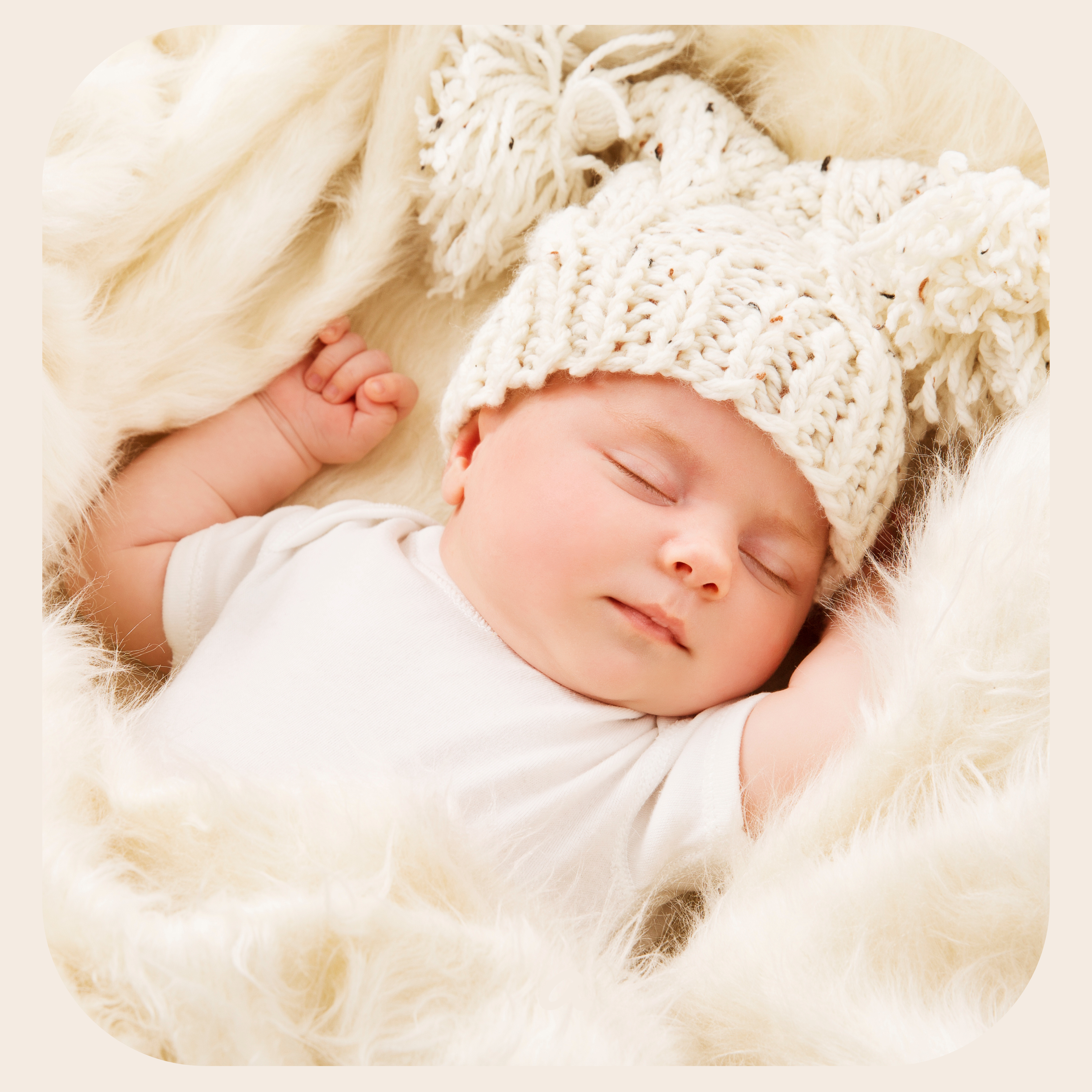
Sound Machines and White Noise for better Baby Sleep
This post addresses the frequently asked questions about sound machines for babies and toddlers. It explores the research on white noise, how to effectively use it for newborns, appropriate volume levels for babies, recommended safe decibel levels, and other related topics.
What is white noise?
Technically, white noise is created by blending all frequencies together. However, many people use the term 'white noise' to refer to any steady sound that promotes relaxation or sleep, such as static, shushing, humming, or a fan. In this blog, I’m using 'white noise' in the broader sense, meaning any consistent sound from a sound machine.
Why do I prefer using "white noise" or a sound machine for helping babies and toddlers sleep?
Sound machines are an excellent aid for improving baby and toddler sleep. Studies suggest that using a sound machine with a consistent setting can:
1.Soothe a fussy baby
2.Help your baby fall asleep more quickly
3.Encourage longer, uninterrupted sleep
How do sound machines help with baby sleep?
White noise can be soothing and significantly improve your baby’s sleep. For babies, especially newborns, silence can feel strange and unsettling since they aren’t accustomed to it—the womb is far from quiet. Inside the womb, babies hear constant sounds like a heartbeat, blood flowing through the placenta, digestion (yes, it’s not the prettiest), and more. The steady hum of a sound machine mimics this familiar background noise, providing comfort for young babies.
Sound machines also help block out disruptive environmental sounds. Everyday noises like traffic, lawnmowers, and technology can disturb sleep. According to the latest statement from the American Academy of Pediatrics (AAP), environmental noise is a major factor in sleep disturbances for children, which negatively impacts daytime alertness, performance, well-being, and overall health. A sound machine can counteract this by masking these noises, making it easier for babies to fall asleep and stay asleep.
Is white noise bad for babies or toddlers? Should I be worried about using a sound machine?
White noise is safe for babies when used properly. While some studies suggest that exposure to excessively loud white noise for prolonged periods could be harmful, there's no need to worry or stop using your sound machine. As long as you follow the recommended guidelines, white noise remains a safe option for your baby.
Here are the American Academy of Pediatrics' (AAP) recommendations for safely using white noise or a sound machine:
1.Keep the sound machine at least 7 feet away from your baby’s sleep area.
2.Set the volume to the lowest effective level. (You can lower the volume even further once your baby is asleep.)
3.Turn off the sound machine during your baby’s awake time.
When used properly, white noise and sound machines are safe for your little ones, and research shows they can be beneficial for improving sleep . You might encounter blogs or articles claiming that "sound machines harm child development" or that "white noise can cause hearing loss." However, we want to assure you that we’ve carefully reviewed the research, studied the latest policy statements from the American Academy of Pediatrics, and collaborated with speech-language pathologists and pediatric audiologists on the use of sound machines for infant and child sleep.
Let’s talk about these concerns and how the safe use of sound machines prevents any of these issues:
Concern #1: Can sound machines lead to hearing loss?
What research tells us: Prolonged exposure to loud noises can indeed result in hearing loss, which may also affect speech and language development. This concern has grown due to rising environmental noise and the use of personal listening devices, like headphones with tablets. However, there is no evidence to suggest that white noise machines, when used according to the AAP’s safety guidelines, cause hearing loss.
Concern #2: Can sound machines cause speech delays?
What research tells us: Constant exposure to loud sounds, like a TV or environmental noise, throughout the day can interfere with speech and language development since children may struggle to hear adult speech properly. To avoid this with sound machines, they should only be used during sleep at a safe volume, and turned off when the child is awake. This ensures children are exposed to enough adult language during their waking hours to support healthy language development.
Concern #3: Could sound machines impair auditory processing?
What research tells us: There is no evidence to suggest that using white noise for sleep negatively impacts auditory processing. A frequently cited study exposed rats to continuous white noise for 24 hours a day, which is often misinterpreted. However, we don’t use white noise in that manner. Instead, we employ it for sleep and ensure that children are exposed to language, communication, and natural sounds during their awake time. It’s important to note that the study referenced continuous exposure, not white noise used solely for sleep.
Concern #4: Do sound machines put babies and toddlers in “fight or flight” mode?
What research tells us: The “fight or flight” response occurs when the body senses danger or stress. Sudden noises or prolonged loud sounds , such as dropping objects, airplanes flying overhead, slamming car doors, or bustling traffic outside, can trigger this response. By using a sound machine during sleep, you provide a consistent sound barrier that protects your baby or toddler from these abrupt loud noises. When used correctly, there is no evidence that sound machines induce a fight or flight response throughout the night.
Can we use pink noise, brown noise, or a different sound instead of specifically choosing “white” noise?
Absolutely, you can!
Are you familiar with pink or brown noise? White, pink, and brown noise are all steady sounds that can be utilized for relaxation. White noise consists of all frequencies combined equally. Pink noise reduces the higher frequencies slightly, while brown noise lowers them even more, creating a much deeper sound.
Feeling a bit overwhelmed? The key takeaway is to choose the type of noise that you find most appealing. Any "color" of noise can provide the calming effect we’re aiming for.
How loud should my baby’s sound machine or white noise be? What are safe decibel levels for infants?
The American Academy of Pediatrics (AAP) advises that sound machines in hospital nurseries should be set to 50 dB or lower. Similarly, the CDC recommends keeping the volume for infants under 60 dB.
It's important to use the lowest effective decibel level for your baby's sleep. The goal is to ensure that the white noise is loud enough to mask any disruptive sounds without being so loud that it could harm your little one's hearing. A practical reference point is the volume of a running shower.
Consider this: when you're standing in the shower with the water pouring down, you likely won't be disturbed by sounds from outside the bathroom. At the same time, the sound of the shower isn’t painful to your ears, and you wouldn’t need to raise your voice to have a conversation with someone just an arm’s length away.
How can I be sure my baby’s sound machine isn’t too loud?
You can check the decibel level using a decibel meter app on your phone (there are several free options available; I recommend this one for iOS or this alternative). Simply turn on the sound machine and place your phone in your little one’s crib to get an accurate reading of the decibel level. Keep in mind that decibel-reading apps may not always be reliable or consistent.
Here’s a simple way to ensure your sound machine is set to a safe volume: Turn it on and stand next to your child's sleeping area. While standing an arm's length away from another person, see if you can have a normal conversation without raising your voice. If you can, then you’ve got the sound machine at a safe level for your child.
Expert Tip: In households with significant noise, some families find that a sound machine set to a safe decibel level isn't sufficient to mask all the sounds. Here's a helpful hack: place an additional sound machine outside the nursery door. The aim is not to increase the volume of the "white noise," but rather to create an extra sound barrier between your baby and the household noise.
How far away should a sound machine be from my baby?
The most recent recommendation from the American Academy of Pediatrics (AAP) states that a sound machine should be positioned at least 7 feet away from your child's head.
To maximize its effectiveness, try placing the sound machine between your child and the source of noise. For instance, you could position the sound machine between the crib and the window to help block outside sounds. If you have twins, consider placing the sound machine in between their two cribs to create a calming environment for both.
When and how do I stop using white, pink, or brown noise for my baby?
Honestly, there’s no reason to stop using white, pink, or brown noise for your child's sleep. Research indicates that sound machines offer benefits that extend well beyond infancy, even into adulthood. Personally, I still use a sound machine myself!
However, if you choose to discontinue the use of a sound machine for your little one’s sleep, you have two options:
1.Weaning: Gradually reduce the volume of the sound machine every few nights until it becomes so quiet that it’s no longer audible.
2.Cold Turkey: Pick a night to stop using the sound machine altogether and see how your little one sleeps without it. If you find that their sleep quality declines, you can always switch back to the weaning method.
How do I choose the best sound machine for my baby?
When choosing the right sound machine for your baby, there are several important factors to consider:
1.Continuous Noise: Opt for a sound machine that provides continuous sound instead of one with a timer that automatically shuts off. Interruptions in noise can wake your baby, disrupting their sleep.
2.Sound Options: Look for a machine that offers continuous white, pink, or brown noise. For some babies and toddlers, more variable sounds like ocean waves or rainstorms can actually disrupt sleep.
3.No Extra Lights: Choose a sound machine that either has no lights or features lights that can be turned off. Light can be very stimulating for an infant's developing brain and may make it harder for little ones to fall asleep and stay asleep.
4.Additional Features: Consider any extra features that you might find helpful, such as a nightlight or an "ok-to-wake" clock. These can be especially useful for middle-of-the-night diaper changes with a newborn or during the toddler years.
5.By keeping these points in mind, you can select a sound machine that best meets your baby’s needs and promotes a restful sleep environment.






